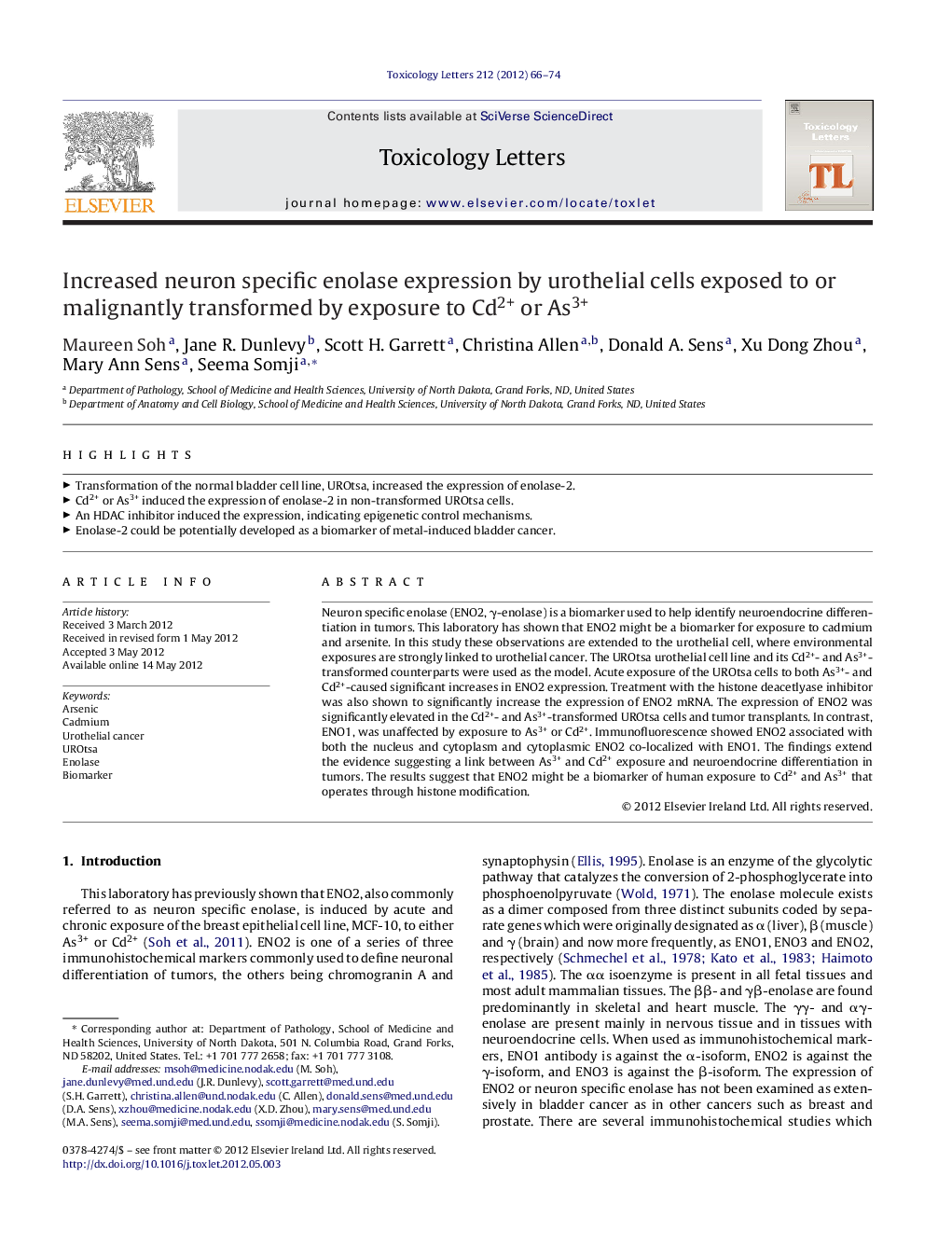| کد مقاله | کد نشریه | سال انتشار | مقاله انگلیسی | نسخه تمام متن |
|---|---|---|---|---|
| 2599606 | 1133220 | 2012 | 9 صفحه PDF | دانلود رایگان |

Neuron specific enolase (ENO2, γ-enolase) is a biomarker used to help identify neuroendocrine differentiation in tumors. This laboratory has shown that ENO2 might be a biomarker for exposure to cadmium and arsenite. In this study these observations are extended to the urothelial cell, where environmental exposures are strongly linked to urothelial cancer. The UROtsa urothelial cell line and its Cd2+- and As3+-transformed counterparts were used as the model. Acute exposure of the UROtsa cells to both As3+- and Cd2+-caused significant increases in ENO2 expression. Treatment with the histone deacetlyase inhibitor was also shown to significantly increase the expression of ENO2 mRNA. The expression of ENO2 was significantly elevated in the Cd2+- and As3+-transformed UROtsa cells and tumor transplants. In contrast, ENO1, was unaffected by exposure to As3+ or Cd2+. Immunofluorescence showed ENO2 associated with both the nucleus and cytoplasm and cytoplasmic ENO2 co-localized with ENO1. The findings extend the evidence suggesting a link between As3+ and Cd2+ exposure and neuroendocrine differentiation in tumors. The results suggest that ENO2 might be a biomarker of human exposure to Cd2+ and As3+ that operates through histone modification.
► Transformation of the normal bladder cell line, UROtsa, increased the expression of enolase-2.
► Cd2+ or As3+ induced the expression of enolase-2 in non-transformed UROtsa cells.
► An HDAC inhibitor induced the expression, indicating epigenetic control mechanisms.
► Enolase-2 could be potentially developed as a biomarker of metal-induced bladder cancer.
Journal: Toxicology Letters - Volume 212, Issue 1, 7 July 2012, Pages 66–74